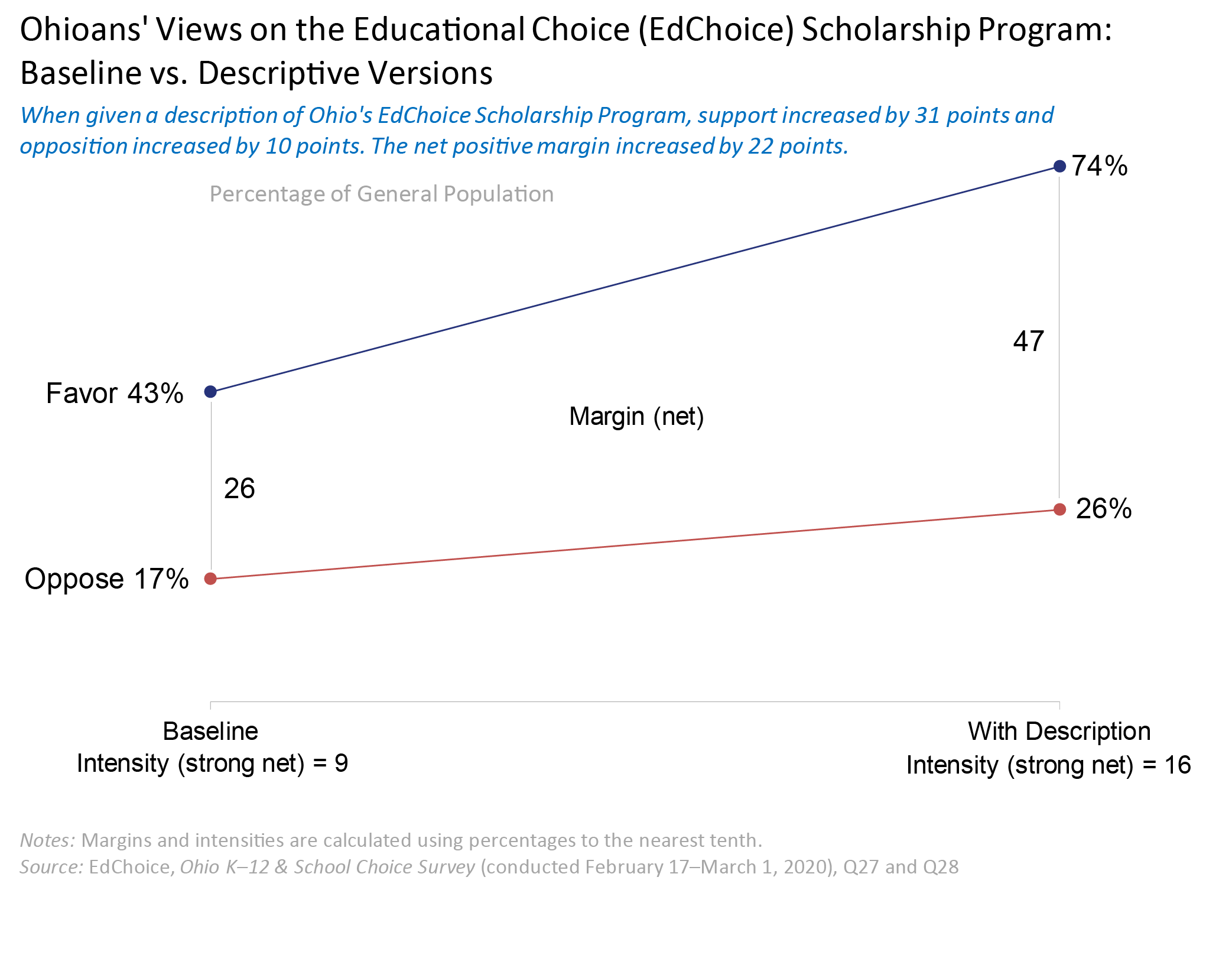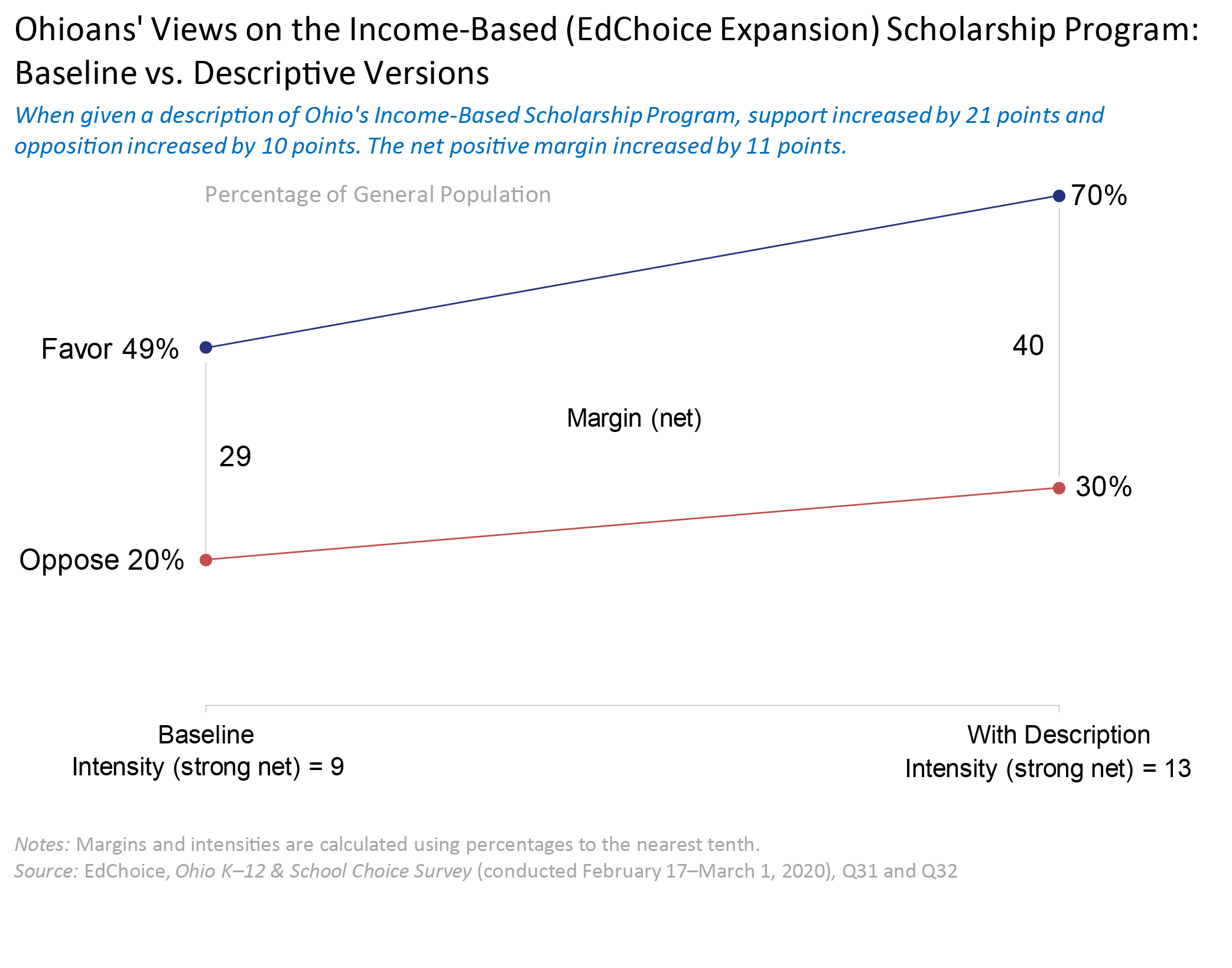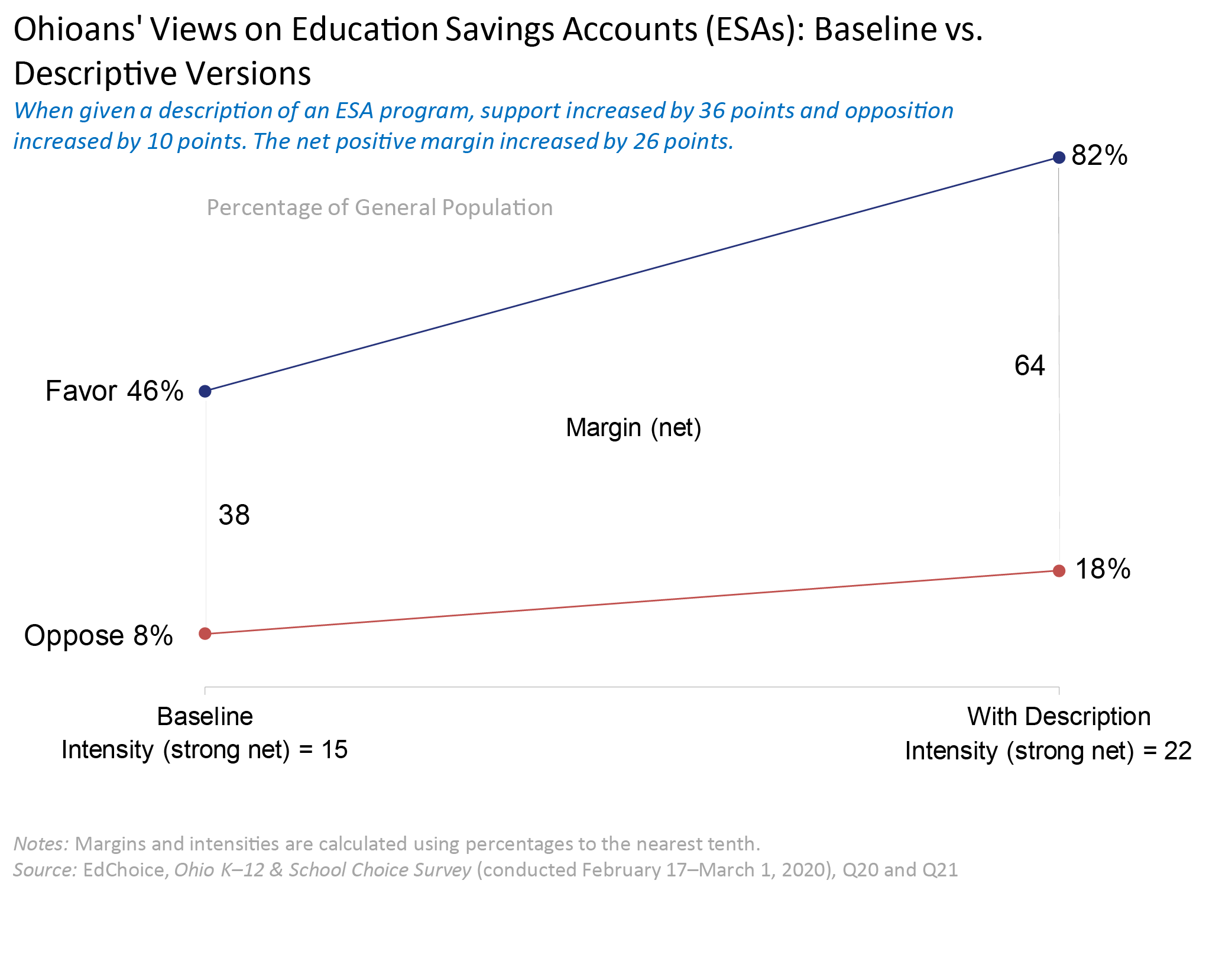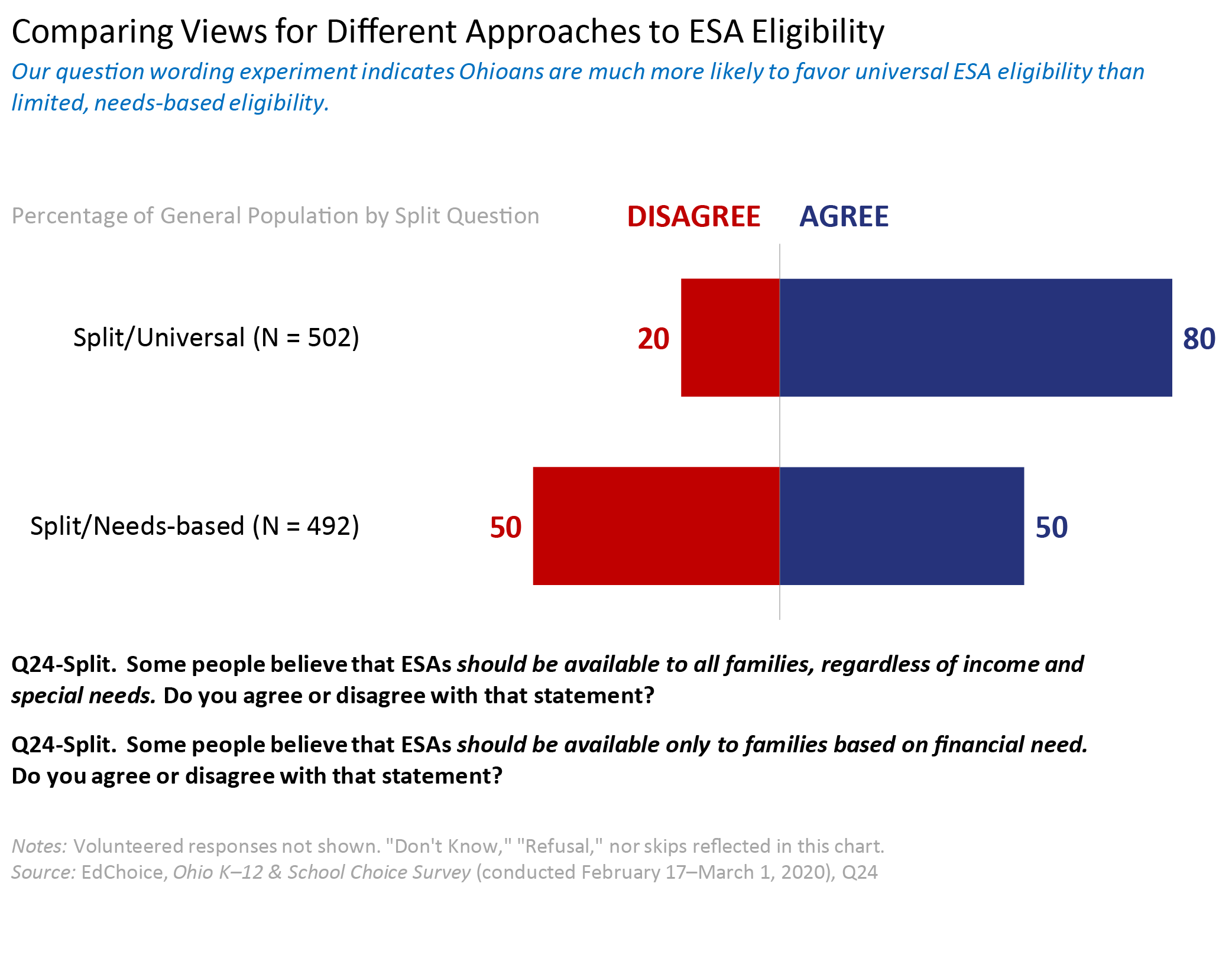Ohio’s Educational Choice Scholarship Program Frozen Despite Strong Public Support
Despite strong public support for the program, Ohio lawmakers froze the state’s Educational Choice (EdChoice) Scholarship Program for one year.
Alterations to private school choice programs were not at the top of mind for most state legislatures by the time the COVID-19 pandemic swept the country, but the EdChoice Scholarship was a major agenda item for Ohio lawmakers heading into the 2020 session due to a non-legislative expansion that was set to take place.
The pandemic cut short months of negotiations that educational choice supporters had hoped would lead to increased access for thousands of families hoping for an expansion this year. Our recent polling continues to show strong support for K–12 options.
Some Quick Programmatic Background
Ohio’s original EdChoice program is a statewide voucher for low-income students zoned to “failing” schools. The state also has an income-based voucher with relaxed requirements for returning students but no requirement that students first be zoned to a “failing” school. (For the record, our organization, EdChoice, is a national nonprofit; we do not have anything to do with the administration of the same-named Ohio program.)
The legislature left it up to the Ohio Department of Education to define which schools were “chronically low-performing” via the state’s accountability report card system in order to determine student eligibility for the Educational Choice Scholarship. For a while, this deference resulted in a fairly constant eligibility pool. Our historical School Choice in America Dashboard data show between 5 and 10 percent of the state’s K–12 students were eligible for the program in any given year from 2011–12 to 2017–18.
But the department changed the way chronically low-performing schools were calculated, which resulted in a dramatic increase in the number of eligible schools. Where previously about 500 schools were given this designation, the new accountability measures pegged more than 1,200 as chronically low-performing. Eligibility (by our calculations) jumped from 8 percent to 29 percent in just one year.
Furthermore, many of these newly designated “failing schools” were in leafy suburban school districts. Cities like Dayton were seeing a doubling of schools added to the list, which prompted concerns from public school district leaders of a mass exodus of students to private schools.
What Ohioans Think About School Choice
In a recent poll EdChoice conducted in partnership with School Choice Ohio, we found that two out of five Ohio voters (40 percent) had never heard of the Educational Choice Scholarship Program and nearly one out of three Ohio voters (31 percent) had never heard of the Income-Based Scholarship Program. However, after being provided with program definitions, nearly three-fourths of voters favored these programs.


Ohio voters are overwhelmingly more likely to think that parents and guardians should be making the decisions as to where a child attends school though, rather than the school district or state government.

And, yes, more than half of parents would prefer a private school for their child if given the option, but more than one-fourth of parents would still prefer a public district school.

What Lawmakers Did
The Ohio legislature had been attempting to compromise over the program before the pandemic. Among the proposals was to increase the appropriation but convert the entire EdChoice Scholarship to a more generous means-tested one akin to the current Income-Based Scholarship (and, as favored by those in this organization who receive more than a fair share of application inquiries from Ohio parents seeking a voucher for their children, rename the entire program to the “Buckeye Scholarship”).
While the program would have had a less expansive eligibility base than the “failing”-schools expansion that would have been applied to next year’s students, using means testing as a choice program entryway is favored by many policymakers and school choice advocates over “failing”-schools models. Wealthy families zoned to “failing” schools are in a better position to exercise choice than poor families in non-“failing” districts. Students may also be eligible one year but not the next due to the list of “failing” schools changing over time.
And that change is just what happened in Ohio. The suspension of standardized testing (which contributes to state report cards of schools) due to the pandemic further complicated matters. As a result, Ohio opted to revert to the “old” list of 517 “failing” schools for Educational Choice Scholarship eligibility for the coming school year as part of a massive omnibus bill.
However, Ohioans are still missing the type of program they would favor the most: Education Savings Accounts (ESAs). Although nearly half of Ohio voters (46%) said they had never heard of ESAs, more than four out of five voters (82%) said they favor ESAs after being provided with a definition.

And Ohioans seem to prefer programs with universal eligibility rather than limiting eligibility to specific populations.

Lawmakers, caught this year in the midst of a pandemic, chose to continue with the current program instead of expanding opportunity to more Ohio families, either via a “failing” schools model or means-testing.
It remains to be seen what they will do when they are next able to consider K-12 funding, but our polling clearly shows an appetite for more choice among families, and we will continue to provide this kind of information to those in the position to make change.





